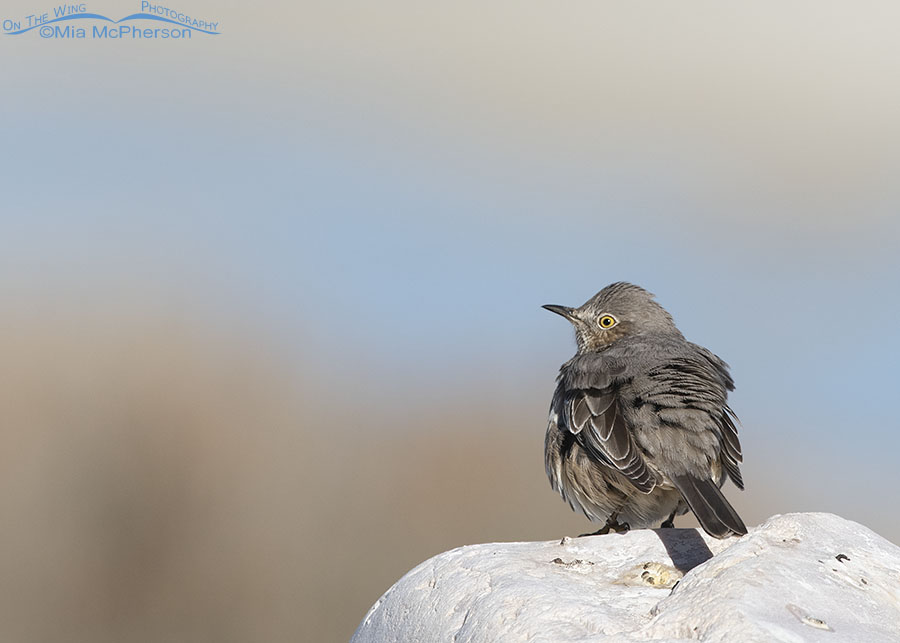 Fluffy Sage Thrasher adult warming up on a rock – Nikon D810, f8, 1/1600, ISO 400, +0.3 EV, Nikkor 500mm VR with 1.4x TC, natural light
Fluffy Sage Thrasher adult warming up on a rock – Nikon D810, f8, 1/1600, ISO 400, +0.3 EV, Nikkor 500mm VR with 1.4x TC, natural light
March 13th is an anniversary of sorts for me. The date is the earliest that I have seen and photographed a Sage Thrasher in northern Utah. The year was 2015 and the location was on the east side of Antelope Island State Park. I spotted and pointed out two Sage Thrashers on that bright, late winter morning. One thrasher was not cooperative but the one in the photo above was as it perched on a rock warming up in the morning sun in front of the Great Salt Lake.
I can barely wait until I hear my first of year Sage Thrasher singing from the top of a rock or sagebrush. It won’t happen today because it is supposed to be rainy but I know it won’t be much longer until I hear a “Mountain Mockingbird” singing.
Due to severity of my allergic reactions to the bites of no-see-ums (biting gnats) I have reduced my visits Antelope Island in the spring when the gnats first hatch. The good news is that I know where I can find Sage Thrashers in other areas where I don’t have to be bitten by the gnats to photograph these thrashers.
Listening to the Sage Thrashers is an earful of joy. Watching them display in early spring is a visual delight. Sage Thrashers aren’t brightly colored birds like the Western Tanagers, Mountain Bluebirds or the hummingbirds that arrive here in spring but they have a vibrancy of their own and part of that vibrancy is contained in the frequency of their songs.
The next weather front coming up from the south may be the push the thrashers need to migrate into northern Utah.
Life is good.
Mia
Click here to see more of my Sage Thrasher photos plus facts and information about this species.

